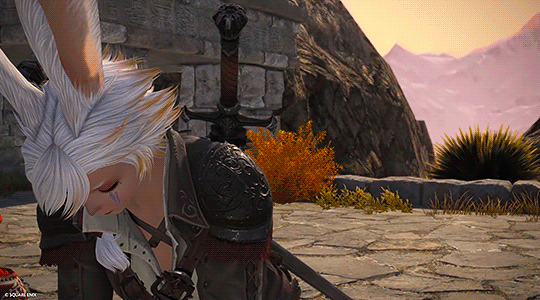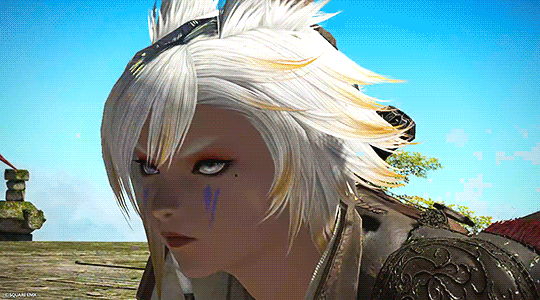#as is my standard photoshop gif making routine
Explore tagged Tumblr posts
Text










FORTUNA FORSYTHIA -> The Dawntrail Benchmark
Thank you Luu @deoxygenated for the footage!
#ffxiv#ff14#dawntrail#dawntrail benchmark#viera#SHOWS HER TO U SHOWS HER TO U#fortuna tag#YOUR HONORRRRRRRRR SHE'S EVERYTHING!!!!!!!!!#so many people I've seen r like NOOO MY VIERA LOOKS SO BAD. well my doesn't. sorry!#average fortuna w :flex:#I did some minor edits of sharpness + brightness/contrast/vibrance/saturation#as is my standard photoshop gif making routine#but it's nothing too crazy the colors just pop a bit more
43 notes
·
View notes
Text
Week 8: Look! There is some thing on my face!
From the title, I guess that most of us can figure out the topic of this week's blog, right?. Well, personally, I haven't been an avid Instagram filters or any-other-features related user since I started using the application. It is not that I am obsolete, but as a young man, I prefer to keep things true to their nature, and this also apply to my pictures and even my selfies (although I do admit to occasionally using Photoshop to make minor adjustments like slimming my face and sharpening my jaw. But that's about it, does that count?).
By the way, the use of Instagram filters, similar to Snapchat's face filters, has become a prevalent practice in the realm of social media. These filters, with their ability to enhance and modify images, offer users the opportunity to curate their online presence and present an idealized version of themselves (sounds so tempting NGL). Evidently, Bhatt (2020), as cited in Javornik et al. (2022), reports that approximately 600 millions individuals ultilize AR filters on Instagram or Facebook on a monthly basis, while a significant 76% of Snapchat users incorporate these filters into their daily interactions.

Steve Harvey before and after being applied Filter (LaConte, 2018)
Massive number, holly cow, am I THAT OBSOLETE. However, like Snapchat's filters the use of Instagram filters raise questions about the implication of digitally altering one's appearance. As Baker (2020) highlighted in her paper, such filters possess such problematic nature, as they often perpetuate unrealistic beauty standards and contribute to feelings of insecurity and body dissatisfaction. The widespread use of Instagram filters calls for a critical examination of their impact on self-image and the pressures they impose on individuals to conform to unattainable ideals.
Let's face it, social media is a highlight reel. Everyone is posting their best angles, their most envy-inducing experiences, and of course, their most flawlessly filtered faces. Enter Augmented Reality (AR) filters, those playful (or deceptive?) tools that can smooth wrinkles faster than a Botox convention, and reshape noses with the precision of a digital Michaelangelo. The pressure to keep up with this filtered reality is real, folks. An article published by The Guardian even coined the term "Instagram Dysmorphia" to describe the dissatisfaction some users experience due to constant comparison with unrealistic online portrayals (Hales, 2023).

But hold on a sec, before banishing filters to the social media underworld, let's acknowledge their potential for fun and self-expression. These filters can be a creative outlet, a way to play with different aesthetics and unleash your inner digital artist. Think of those hilarious dog face swaps, or the trippy, psychedelic effects that turn your morning coffee into an intergalactic portal (do not worry, I will not judge if that is your aesthetic).
Moreover, forget 5 AM makeup routines! Coy-Dibley (2019) reveals a world where Instagram filters transform selfies into ethereal masterpieces. Imagine eyes bigger than UFOs and cheekbones sharper than Greek statues - all with a tap! These filters are not just vanity, they are tools for survival in the digital jungle, letting you create content that screams "flawless" (Coy-Dibley, 2019). So next time you see a picture-perfect post, remember: it might be more pixels than reality. But hey, who needs real diamonds when you can have filtered ones that sparkle just as bright?

References
Barker, J. (2020). Making-up on mobile: The pretty filters and ugly implications of Snapchat. Fashion, Style & Popular Culture, 7(2), 207–221. https://doi.org/10.1386/fspc_00015_1
Coy-Dibley, I. (2016). “Digitized Dysmorphia” of the female body: the re/disfigurement of the image. Palgrave Communications, 2(1). https://doi.org/10.1057/palcomms.2016.40
Hales, L. (2023). “Why would you find me attractive?”: the body disorder that needs more attention. The Guardian. https://www.theguardian.com/australia-news/2023/oct/29/why-would-you-find-me-attractive-the-body-disorder-that-needs-more-attention
Javornik, A., Marder, B., Barhorst, J. B., McLean, G., Rogers, Y., Marshall, P., & Warlop, L. (2022). “What lies behind the filter?” Uncovering the motivations for using augmented reality (AR) face filters on social media and their effect on well-being. Computers in Human Behavior, 128(107126), 107126. https://doi.org/10.1016/j.chb.2021.107126
LaConte, S. (2018). Somebody Edited Steve Harvey’s Face To Make A Point About Instagram And OMG It’s Too Real. BuzzFeed. https://www.buzzfeed.com/stephenlaconte/steve-harvey-edited-facetune-face-instagram
0 notes